-
Home
- ISO 45001:2018
All Categories
- ISO 9001:2015
- IAF Register
- Organic certification
- ISO 14001:2015
- OHSAS 18001:2007
- ISO 27001:2013
- ISO 13485:2016
- ISO 50001-2011
- CE Marking
- ISO 15000 HACCP
- ISO 29990:2010
- ISO 22301-2012
- Lead Auditor Training
- ISO 29993:2017 Certification
- Other Services
- HSE MS
Quick Links
- About us
- CE Marking Certification
- Impartiality Statement
- Founder
- Quality Policy
- ISO Application Process
- Certified Client
- Accredited Certificate Need to be Converted
- History
Quick Links
- About us
- CE Marking Certification
- Impartiality Statement
- Founder
- Quality Policy
- ISO Application Process
- Certified Client
- Accredited Certificate Need to be Converted
- History
- CE Notified Body
- ISO 10002
- ISO 50001
- Low Voltage CE
- Responsible Care Management System
- IFS Food
- Global GAP
- Code of Integrity
- Use of Marks
- Key Elements of BCMS
- IAF Register of Accredited Certificate
- What are Key Documents required for Client as per ISO?
- IAF Register
Read More
ISO 45001:2018

Basic Introduction of Occupational Health and Safety Management System: Iso 45001:2018
ISO 45001:2018 certification sets the criteria for an Occupational Health and Safety Management System (OH&SMS) that enhances workplace safety, reduces workplace risks, and creates better, safer working conditions. It enables organizations to proactively improve occupational health and safety performance by preventing work-related injuries and illnesses. Certification demonstrates commitment to ensuring a safe and healthy workplace environment, complying with legal and regulatory requirements, and fostering a culture of continuous improvement.
Structure of the ISO 45001:2018 Standard
The ISO 45001:2018 standard is structured into several clauses that outline the requirements for an Occupational Health and Safety Management System (OH&SMS). Here's an overview of the structure by clause:
1.Scope (Clause 1): Defines the scope of the standard, specifying what the OH&SMS covers within the organization.
2.Normative References (Clause 2): Lists any referenced standards or documents essential for understanding and implementing ISO 45001:2018.
3.Terms and Definitions (Clause 3): Provides definitions of key terms used throughout the standard to ensure common understanding.
4.Context of the Organization (Clause 4): Requires organizations to determine the external and internal issues relevant to their OH&S management system and the needs and expectations of interested parties.
5.Leadership and Worker Participation (Clause 5): Emphasizes the leadership's commitment to the OH&SMS, worker participation, consultation, and the establishment of an OH&S policy.
6.Planning (Clause 6): Covers actions to address risks and opportunities, OH&S objectives and planning to achieve them, and planning of changes.
7.Support (Clause 7): Addresses resources, including competent workers, infrastructure, monitoring and measuring resources, awareness, communication, documented information, and operational planning and control.
8.Operation (Clause 8): Includes operational planning and control, hazard identification, assessment of OH&S risks and opportunities, determining legal and other requirements, elimination of hazards and reduction of OH&S risks, management of change, procurement, emergency preparedness and response, and outsourcing.
9.Performance Evaluation (Clause 9): Covers monitoring, measurement, analysis, and performance evaluation, internal audit, and management review.
10.Improvement (Clause 10): Deals with incident, nonconformity and corrective action, and continual improvement.
Each clause specifies requirements that organizations must meet to achieve ISO 45001:2018 certification. This structured approach ensures that the OH&S management system effectively identifies, controls, and reduces risks while improving overall occupational health and safety performance.
Benefits of ISO 45001:2018 Certification
ISO 45001:2018 certification offers numerous benefits to organizations:
• Improved Occupational Health and Safety: Enhances workplace safety, reduces workplace risks, and prevents work-related injuries and illnesses.
• Legal Compliance: Ensures compliance with occupational health and safety legal and regulatory requirements, reducing the risk of penalties and fines.
• Enhanced Organizational Reputation: Demonstrates commitment to occupational health and safety, enhancing organizational credibility and trust among stakeholders.
• Cost Savings: Reduces costs associated with workplace incidents, insurance premiums, and absenteeism, contributing to improved financial performance.
• Worker Engagement: Promotes worker participation, consultation, and engagement in occupational health and safety matters, fostering a positive safety culture.
Eligibility Criteria for ISO 45001:2018 Certification
To achieve ISO 45001:2018 certification, an organization must meet several key criteria. These include having a documented Occupational Health and Safety Management System (OH&SMS), demonstrating leadership commitment, focusing on worker participation and consultation, implementing risk-based thinking, and identifying hazards. Additionally, the organization must commit to continual improvement, ensure the competence and awareness of workers, maintain documented information, manage resources effectively, and comply with legal and other requirements.
Key points:
1.Documented Occupational Health and Safety Management System (OH&SMS)
2.Leadership commitment and worker participation
3.Risk-based thinking and hazard identification
4.Competence, awareness, and legal compliance
Who should establish the requirement for ISO 45001:2018 Certification
The requirements for ISO 45001:2018 Certification should be established by any organization, regardless of its size or industry, that seeks to implement an Occupational Health and Safety Management System (OHSMS) to ensure the safety and well-being of its employees and stakeholders. ISO 45001 is applicable across various industries, including manufacturing, construction, healthcare, information technology, food and beverage, retail, and financial services. By adopting ISO 45001 standards, these industries can achieve significant benefits such as reduced workplace accidents, enhanced regulatory compliance, improved employee morale, and increased operational efficiency. For instance, manufacturing companies can mitigate risks associated with machinery and production processes, while construction firms can improve site safety and reduce incidents. Healthcare providers can protect staff from occupational hazards, and IT companies can create safer working environments for their employees. Food and beverage companies can ensure safe practices in food handling and production, retail businesses can enhance store safety and ergonomics, and financial institutions can promote a healthy and safe office environment. Overall, ISO 45001 helps organizations build a proactive health and safety culture, drive continuous improvement in occupational health and safety, and achieve long-term success by effectively managing their health and safety responsibilities.
Step for Obtaining ISO 45001:2018 Certification
Obtaining ISO 45001:2018 certification involves several key requirements and steps:
1.Establishing an OH&S Management System: Develop an Occupational Health and Safety Management System (OH&SMS) that meets ISO 45001:2018 requirements.
2.Documentation: Develop the necessary documentation for the OH&SMS, including an OH&S policy, objectives, procedures, and records required by the standard.
3.Implementation: Implement the OH&SMS across the organization, ensuring worker awareness and involvement in occupational health and safety matters.
4.Internal Audit: Conduct internal audits to assess the effectiveness of the OH&SMS and identify areas for improvement.
5.Management Review: Conduct management reviews to evaluate the OH&SMS's performance, suitability, adequacy, and opportunities for improvement.
6.Certification Audit: Engage an accredited certification body to conduct a certification audit. The audit will assess the organization's OH&SMS against ISO 45001:2018 requirements.
7.Corrective Actions: Address any non-conformities identified during the certification audit and implement corrective actions as necessary.
8.Certification: Upon successful completion of the certification audit and resolution of any non-conformities, the certification body will issue ISO 45001:2018 certification.
9.Surveillance Audits: Maintain the OH&SMS and undergo periodic surveillance audits by the certification body to ensure ongoing compliance with ISO 45001:2018 requirements.
10.Recertification Audit: Conducted at the end of the certification cycle (typically three years) to renew ISO 45001:2018 certification and ensure continued conformity and improvement.
What are the Documents and Records and organisation should maintain for ISO 45001:2018 Certification?
Mandatory Documents:
1.Scope of the Occupational Health and Safety Management System (Clause 4.3).
2.Occupational Health and Safety Policy (Clause 5.2).
3.Objectives of the OH&S Management System (Clause 6.2).
4.Procedure for Hazard Identification and Assessment of OH&S Risks (Clause 8.1.2).
5.Documented Information Required by the Standard (Clause 7.5.1).
Mandatory Records:
1.Records of Hazard Identification and Risk Assessment (Clause 8.1.2).
2.Records of Occupational Health and Safety Objectives (Clause 6.2).
3.Records of Monitoring of OH&S Performance (Clause 9.1.1).
4.Records of Internal Audits (Clause 9.2).
5.Records of Management Reviews (Clause 9.3).
Non-Mandatory Documents (Examples):
1.Procedure for Incident Investigation.
2.Procedure for Emergency Preparedness and Response.
3.Procedure for Monitoring and Measurement of OH&S Performance.
What is the process for ISO 45001:2018 Certification?
The certification process with TNV involves several critical steps to ensure thorough evaluation and compliance with ISO 45001:2018 standards:
1.Stage 1 Audit: A preliminary audit to assess readiness for the certification audit, including a review of the OH&S management system documentation and initial identification of potential non-conformities.
2.Stage 2 Audit: An on-site audit to evaluate the implementation and effectiveness of the OH&SMS. This includes interviews, observations, and document reviews to verify compliance with ISO 45001:2018 requirements.
3.Addressing Non-Conformities: Identification and resolution of any non-conformities identified during the audit process. Detailed feedback and corrective actions are developed to address deficiencies.
4.Certification Decision: Upon successful completion of the audit and resolution of non-conformities, TNV will make a certification decision and issue ISO 45001:2018 certification. This demonstrates the organization's commitment to occupational health and safety excellence.
5.Surveillance Audits: Annual audits are conducted to ensure ongoing compliance and continuous improvement. These audits help maintain the integrity of the OH&SMS and identify areas for enhancement.
6.Recertification Audit: Conducted at the end of the certification cycle (typically three years) to renew ISO 45001:2018 certification. This involves a comprehensive review to confirm continued conformity and improvement of the OH&SMS.
WHAT IS THE COST OF THE ISO 45001:2018 Certification
This is most critical question for a certification body, there is no definite charges for any ISO Certification, Expenses for Certification are widely depend on the various factors like size, location, complexity of operations, processes, their inter-relevance and state of the implementation of the requirement. For a small size organisation, charges may be lower whereas for large scale organisation, charges may be higher. Charges for the certification mainly depend on the three main factors, fist status of the implementation of the system in the organisation, Audit Duration and registration Fees which is usually called as Certification fees. TNV provides quotation considering all the factor which may be important. Client organisation need to submit information of client organisation in the specific form that F-01 and this form is available on the official portal in download section. You are advised to please write to us via email at info@isoindia.org or click on Contact us on the portal and submit the inquiry.
Importance of Accreditation of ISO 45001:2018 When You Choose a Certification Body
Choosing an certification body for ISO 9001:2015 is most critical task and selection of a valid and accredited Certification body ensures your certification is credible and globally recognized but if you choose a wrong certification body, you may miss the benefit of the certification and your certification may be challenged at several points. Accredited Certification bodies have established a proper system and they have qualified auditors and robust processes, leading to consistent and high-quality audit outcomes which result into legit and accredited Certification. This enhances your organization’s market reputation and can open up new business opportunities, as many customers and partners prefer accredited certification. Additionally, it aids in regulatory compliance and reduces the risk of certification being questioned. Overall, accreditation ensures your certification supports continuous improvement and customer satisfaction, facilitating smoother entry into international markets. In case of ISO Certification, Accredited mean it should be accredited and recognised by IAF. IAF is the only way to offer global recognition. IAF offer a global directory of Certified client and all kind of organisation say Certified organisation, Certification body and Accreditation board which is involved in the Management System Certification are duly listed on the IAF portal, i.e. www.iafcertsearch.org. TNV is an accredited Certification body within IAF and certificate issued by IAF are accepted worldwide. Validity of all accredited certification, certification body, Accreditation board can be verified on IAF portal i.e. www.iafcertsearch.org
Recognition Through UAF Accreditation
TNV Certification Pvt. Ltd. is accredited by the United Accreditation Foundation (UAF), a globally recognized accreditation body. This UAF accreditation ensures that our certification services adhere to the highest standards of competence, impartiality, and performance. Achieving certification through TNV provides your organization with international recognition and credibility. UAF accreditation guarantees that your ISO 9001:2015 certification is recognized and respected worldwide, enhancing your organization’s reputation and facilitating market access. UAF is an IAF member and MLA signatory that offers global recognition to all Certified Clients. TNV is accredited by UAF for wide range of the series of the standard like ISO 9001, ISO 14001, ISO 45001, ISO 22000, ISO 13485, ISO 21001, ISO 20000-1, ISO 27001, ISO 27701, ISO 37001, ISO 41001, ISO 50001, ISO 55001 and this makes TNV a largest Certification body in India who offers such wide range of the series of the standard. This wide services range enable our clients to avail all the accredited Services under one roof.
Importance of Updating Certified Organizations on http://www.iafcertsearch.org
Maintaining an up-to-date record of your ISO 45001:2018 certification on the IAF CertSearch database is crucial for several reasons. The IAF portal for the global database is http://www.iafcertsearch.org/, and anyone may access and check the recognition of clients, certification bodies, and accreditation boards. IAF is the only method to check the validity of the check and recognized certificate:
• Visibility and Credibility: By having your certification details on the IAF CertSearch platform, you enhance your organization’s visibility and credibility. Stakeholders worldwide can easily verify your certification status, which is especially important for potential clients and partners.
• Verification and Trust: Clients, regulatory bodies, and other interested parties can verify the authenticity and validity of your certification through IAF CertSearch. This transparency builds trust and confidence in your organization’s commitment to quality and regulatory compliance.
Integration of ISO 45001:2018 with Other Standards
An integrated management system (IMS) combines all related components of a business into one system for easier management and operations. ISO 45001:2018 specifies requirements for an occupational health and safety (OH&S) management system, enabling organizations to provide safe and healthy workplaces by preventing work-related injury and ill health, as well as proactively improving OH&S performance.
ISO 45001:2018 can be integrated with other standards such as:
• ISO 9001:2015 - Quality Management System
• ISO 14001:2015 - Environmental Management System
• ISO 13485:2016 - Medical Devices Quality Management System
• ISO 22000:2018 - Food Safety Management System
• ISO 20000-1:2018 - Information Technology Service Management System
• ISO 41001:2018 - Facility Management System
• ISO 21001:2018 - Educational Organizations Management System
• ISO 37001:2016 - Anti-Bribery Management System
• ISO 50001:2018 - Energy Management System
• ISO 55001:2014 - Asset Management System
• ISO 27001:2022 - Information Security Management System
• ISO 27701:2019 - Privacy Information Management System
Apply for ISO 45001:2018 Certification
If you plan to pursue ISO 9001:2015 certification, request a quotation by providing your organization’s information in the application form. You can download the inquiry form from our website or submit your inquiry through the Apply Now button. Alternatively, send your inquiry via email to info@isoindia.org or click on Contact us. You have option to choose more than one standard and if you consider that other standard may help your organisation, you may integrate the standards within the accredited certification range and may apply for the certification for ISO 9001, ISO 14001, ISO 45001, ISO 22000, ISO 13485, ISO 21001, ISO 20000-1, ISO 27001, ISO 27701, ISO 37001, ISO 41001, ISO 50001, ISO 55001.
- ISO 27001:2022
- ISO 20000-1:2018
- ISO 21001:2018
- ISO 14001:2015
- ISO 45001:2018
- ISO 22000:2018
- ISO 50001:2018
- ISO 27701:2019
- ISO 55001:2014
- ISO 41001:2018
- ISO 37001:2016
- ISO 13485:2016
- ISO/IEC 42001:2023
- ISO 20121:2024
- ISO 37301:2021
- ISO 27017:2015
- ISO 9001-2015
- ISO 27035 Certification
- ISO 27032 Certification
- ISO 27018 Certification
- ISO 27040 Certification
- ISO 27050 Certification
- ISO 29100 Certification
Certificate

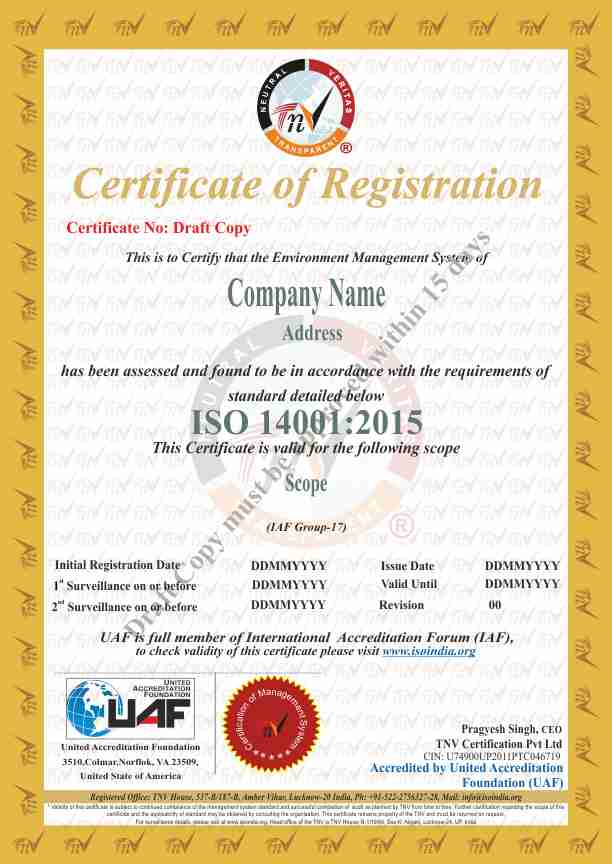
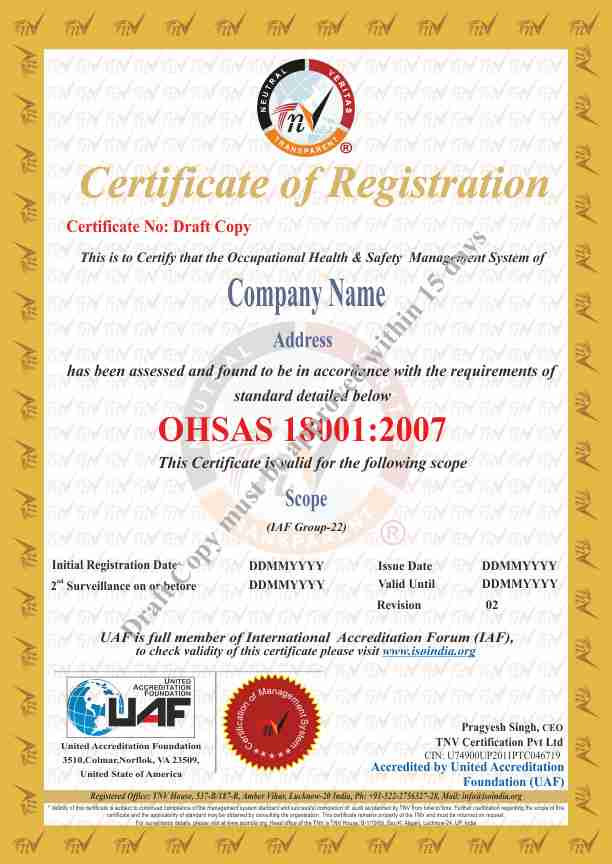
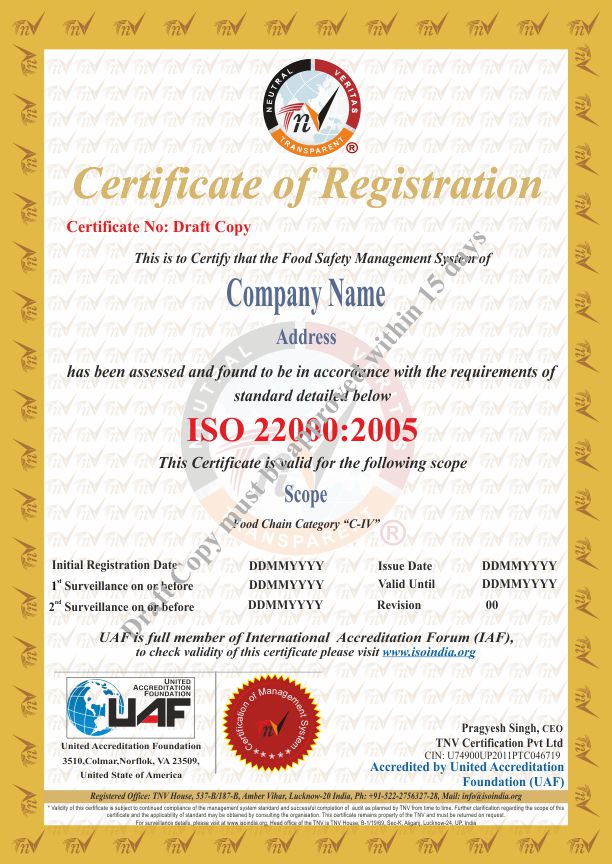
.jpg)
 Sanjeev Sharma
Sanjeev Sharma
We are Certified by TNV since last 6 years and we are absolutely happy and satisfied with the systematic approach of the Team. Best Wishes.
»
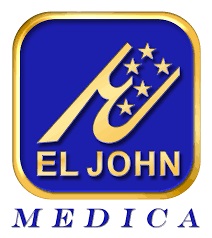 PT. Sun Health Care
PT. Sun Health Care
As always it was an excellent input that we got from TNV, looking forward to continuing a relationship with them. The assessment was very much a structured approach. Our team learned a lot Ari Rahmawati Director of PT Sun Health Care (El John Medica) »
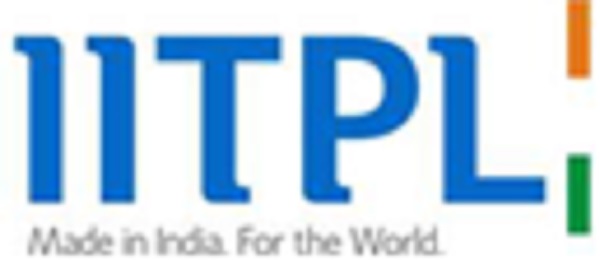 Innovation Imaging Technologies Pvt. Ltd
Innovation Imaging Technologies Pvt. Ltd
"May I take this opportunity to thank you for all your help in the arrangements and organisation for the Training of MD QMS Lead Auditor Certification Course attended. The course was very informative and structured to our requirements. I feel that the relationship that has been b »
 SSP Tech Consultancy Malaysia
SSP Tech Consultancy Malaysia
SSP Tech Consultancy Malaysia is so proud on the long lasting relationship with TNV Certification PVT LTD.
We have been working with TNV since 2010 and there were more than 80 clients have been certified in the field of ISO9001 , ISO14001, ISO45001 & ISO 13485.
We thank you For »
 Maria P. Belyanchikova
Maria P. Belyanchikova
Dear Sir,
We kindly express gratitude for your
outstanding service and long-lasting
cooperation.
Since 2014 our companies in Russia, Moscow,
and United Arad Emirates, Dubai, have several
times ordered certification, surveillance and
audit from TNV Certification Pvt LTD and »
 Unnikrishnan Narayanan Namboodiri
Unnikrishnan Narayanan Namboodiri
Dear Sir,
It is with great pleasure that we at Inspirit Safety Solutions Pvt Ltd, are conveying our gratitude and appreciation to TNV Certification Pvt Ltd for providing the best of services in the domain of
Management System trainings and certifications by accepting us as an a »

I have developed a great relationship with TNV Certification Pvt LTD.
I have undergone a few trainings with TNV training team & have
found their approach to be a highly professional & committed to
providing quality trainings & certifications. I am glad that I also have
had th »







